What to Collect?
So, you’ve decided you want to be a coin collector. Smart thinking! But where to start? What to collect first? Right now, you may feel as if you’re stuck on the Monopoly “GO” square because no one has handed you the dice. Not even the universally popular cute Monopoly dog token can advance on the game board without the dice.
What follows is some "advice dice” to get you off the “GO” square. Unlike tossing dice, however, you have much greater control what numbers come up. Best of all, with planning and purposeful action, you will enjoy your years as a coin collector (and profit in multiple ways). Never will you have to suffer the indignity of “DO NOT PASS GO, DO NOT COLLECT $200”. (Apologies to non-Monopoly players)
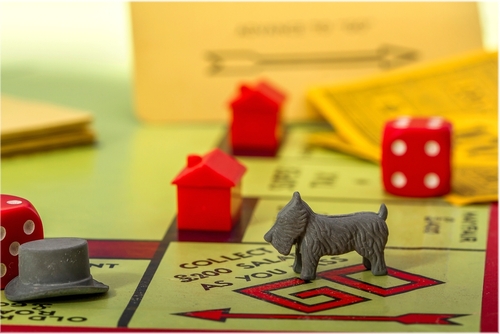
Specify Goals
A good way to get moving is to specify one or more goals for your collecting activities. That is, designate something to strive for. Here are some thoughts on specifying goals...
Collect by Set
One of the most traditional collecting goals is to "collect by set". For generations, this has been the preferred approach for many new hobbyists.
To employ this method of collecting, you'll first need to define what your set is. Usually, a set is defined as a particular coin series, such as Walking Liberty half dollars. To complete this set, you'll need a coin example from every year and from every mint facility the Walking Liberty half dollar was issued. If you are like most collectors operating on a limited budget, the rare 1921-D will be one of the toughest hills to climb in this series.
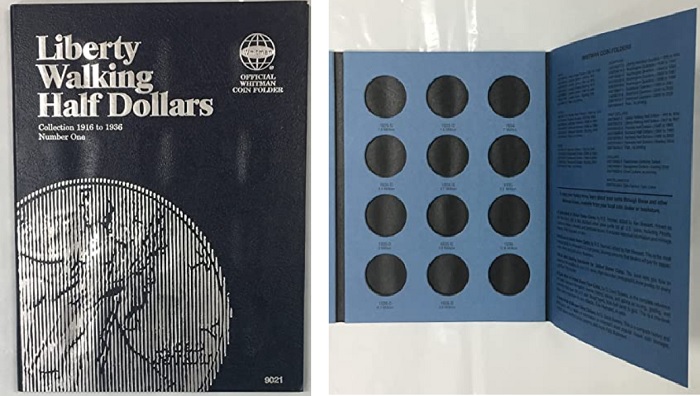
Your set doesn't have to be a full series from the first year to the last. A "short set" is a worthwhile goal as well...
Let's say you define your set to be the one cent coin Lincoln Memorial reverse (meaning you can forget about the pennies from 1909-1958!). It so happens a good many members of this set can be found still circulating or stockpiled in long forgotten piggy banks. Eventually, you’ll learn about the 1969-S double die variety and decide if it’s something to include in your collection (probably not, if your budget is small).
Obviously, if you select a set with many rarities (Morgan dollars, for example), that means you'll probably have quite a few unfilled spots in your collection for a long time because of the cost in acquiring an example of every date and mintmark. That's all part of the challenge!
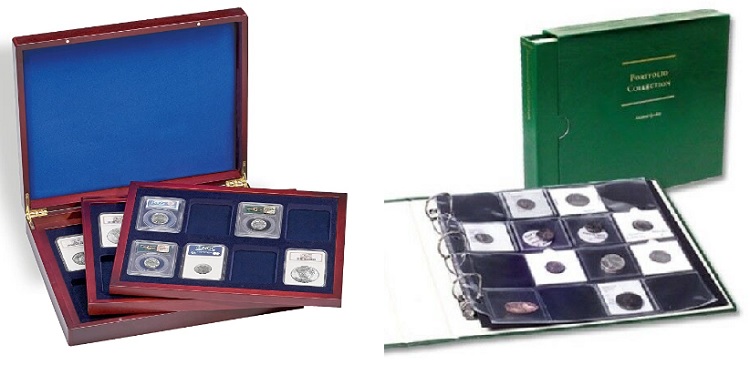
Collect by Type
Another strategy is to “collect by type”. One of the most frequent type sets is when the collector searches for coins representing a given denomination (for example, one cent, five cent, or dollar), which may or may not be in connection with an historical event or era. YOU get to decide that.
Let’s say your heart desires to build a type set collection of dimes. To complete this objective, you’ll need at least one representative from each of the following dime series: Draped Bust, Capped Bust, Seated Liberty, Barber, Winged Liberty (often called Mercury), and Roosevelt. Even a “common date” Draped Bust dime may stretch a collector’s pocketbook a little, but that’s the fun of acquiring a rare coin!

That's just one example of a type set.
A type set can be narrower or larger, depending on the parameters you designate. Here are a few ideas for type sets:
- Coin denominations that no longer circulate (half cent, two cent, three cent, twenty cent).
- Coins that were issued during World War II.
- Coins that were issued during the years your favorite president from history held office.
- Coins that were issued during the lifespan of someone you respect and admire.
- Coronet Head (sometimes called Liberty Head) gold coins (but you don't have to pick expensive rarities!).
- Coins that were issued during the 20th century.
- Coins that were issued the year your great-grandfather arrived in America.
- Coins from the Wild West days.
By now, you get the picture. The list can go on and on. Some type sets can be rather large, others tightly defined and small. There is a great deal of latitude in how you specify your type set. The only "rule" is to collect stuff that rocks your socks!
Collect by Subject Matter
This is where the imagination takes over. Pick a subject matter that interests you and collect coins featuring that theme. (Note: This approach is especially enticing to the youngest collectors.) Here are a few suggestions:
- Coins with animals (maybe even a specific animal, such as a buffalo).
- Coins with flowers.
- Coins portraying Native Americans.
- Coins portraying U.S. presidents.
- Coins depicting modes of transportation.
- Coins displaying an eagle in flight.
- Coins portraying women from history.
If you include coins from around the globe as you consider your subject matter, all of sudden the possibilities are boundless!

Get Collecting Goal Ideas from Registry Sets
If you need more ideas for collecting goals, you should sneak a peek at “Registry Sets”.
What are Registry Sets?
A Registry Set is a compilation of PCGS and/or NGC certified coins catalogued in a public online venue. Collectors display photos of their coins. If desired, participating collectors can compete against one another for recognition of the finest sets.
The largest coin grading companies, PCGS and NGC, have both built platforms to host Registry Sets. You have to join the platform to browse, but there are no sign-up fees.
Basically, collectors form their coins into sets according to categories outlined by the platform. For example, one category might be “Liberty Head Nickels 1883-1912, Proof Issues”. A collector with Proof Liberty Head nickels can register a set in this category. There are set categories spanning the entire collecting spectrum, including international coins and tokens.
Many of the set descriptions are much more original than the basic "Collect by Set" process.
Custom categories are allowed if approved by the registry administrators, and these groupings reflect a wide gamut of creative perspectives that include thematic-based sets.
There are low cost sets appropriate for beginners, as well as those certain to be a test for collectors of advanced knowledge and assets.
The Registry set field is fertile ground for hobbyists looking to harvest fresh ideas for “growing” new and intriguing collections. Whether or not you choose to officially register your set on a platform is, of course, totally up to you.
Coin collecting has been around for thousands of years, but Registry Sets are a 21st century phenomenon that has facilitated an additional demand for coins. Rare Coins 101 has a closer look at Registry Sets in the “What Makes a Coin Valuable” section.
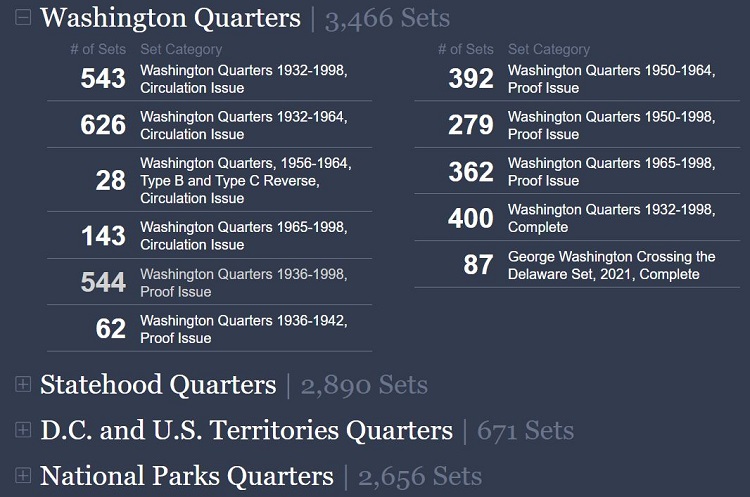
Start Out Small
As we already know, your goals should center around building a collection of interest to you. Whatever that might be, it is wise to start out small.
Why start out small? Why not go for the gusto right off the bat? This Rare Coins 101 Axiom reveals the answer:
Most new collectors should enter the coin marketplace at a beginner level to minimize potential losses due to inexperience.
Translation: Before diving headfirst into major purchases, get a feel for grading. Learn the lingo of the hobby. Attend coin shows and see firsthand various coin types. Watch how seasoned collectors manage the excitement of the bourse floor.
There is more: Observe auction activity. Understand how and why coin retail prices are stratified. Recognize how patience and discipline play a role in building a collection of an enviable nature.
These topics are covered on Rare Coins 101 and are accessible through the menu at the top of every page.
What is small? For most of us, it means collecting a set that is relatively easy and inexpensive to assemble. Examples are Lincoln Cents (especially the aforementioned Memorial reverse type) or Roosevelt dimes.
My favorite recommendation for beginners with limited resources is Jefferson nickels, because a nearly full set is still possible to complete by plucking specimens from circulation.

A new collector with an above average allowance for coins may not need to start out at the very bottom. For someone in that situation it is okay to jump into an intermediate set, such as Standing Liberty quarters, but not without first completing the hobby "training regimen" and addressing many questions pertaining to the series. For example...
- What is a Type 1 and Type 2 Standing Liberty quarter?
- Why are Standing Liberty quarters prior to 1925 much harder to identify?
- What is a Full Head Standing Liberty quarter?
- Who are some of the leading Standing Liberty quarter specialists and what are their publications?
- What to look for when grading Standing Liberty quarters?
- What are the key dates of the series?
When you can comfortably answer these questions and more, you may be sufficiently versed in Standing Liberty quarters to spend thousands on the rare 1916 and 1918/7-S.
By starting out small while taking on the role of thoughtful collector, you will learn many basics and safely ease into the hobby. As you gain experience and your confidence grows, you’ll be empowered to reach for loftier goals. Perhaps someday you will own a handsome (and exceedingly valuable) collection of uncirculated half eagles from the Charlotte Mint.
My Personal Goal Setting Journey
It’s me again… Webmaster Dan Goevert
I introduced myself in the About Dan page, where I discussed my lifetime of coin collecting... how I got started, some of my interests, and other numismatic endeavors.
Since we're having a conversation here about what to collect and goal setting, I'll rehash some of that material and use my own journey as an example (at the risk of boring everyone to death).
Thanks, Grandma
My grandmother got me interested in coins when I was about four years old by bribing me with a dime every Sunday if I behaved well in church (nope -- I didn’t always get the reward).
Even as a small fry, I noticed a few of the dimes (the Mercury dimes) looked different compared to most of the others (the Roosevelt dimes) and I wondered why, so I sat them aside in a Calumet baking soda can. A coin collector was born!
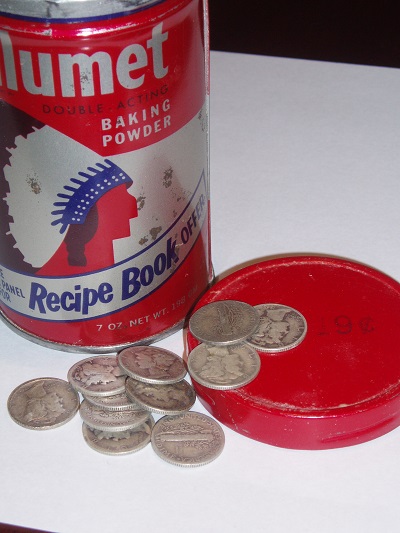
A Typical Young Collector Back in the Day
A few years later, like so many kids in the 1960s, I collected Lincoln cents, harassing anybody and everybody for pocket change to search through. One of my better finds was a 1927-D cent discovered in a friendly neighbor's coin stash, which she gifted to me. I still own it to this day.
Another memory: One of my dad's co-workers knew I was into coins and invited us over to his house where he had a hoard of pennies for me to search through. Imagine my delight when I discovered a semi-key 1924-D! (I was hoping I would get to keep it for my collection, but that was not to be.)
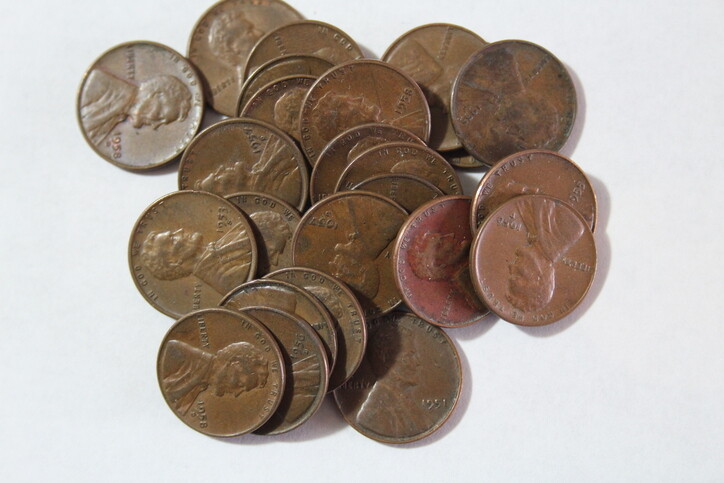
From there, I followed a somewhat predictable path, moving on to Indian Head cents and Buffalo nickels. Upon entering adulthood, most of my album slots had been filled, but the toughest dates remained open.
As time went on, I developed a few collecting peculiarities…
Wandering Off the Beaten Path
This is where my collecting journey wandered off the beaten path.
As was covered in type set goals a few paragraphs above, the sky is the limit when it comes to specifying a type set that fascinates you.
Just to illustrate how individual experiences can shape collecting preferences, let me briefly recount this story from my high school years…
When I was in 11th grade, all English class students were required to write a term paper. Topics for term papers had to be pre-approved by the teacher, a tough-as-nails Mrs. Anderson.
Although I took pride in studying military history, I barely knew anything about the seldom-mentioned conflict called the “War of 1812”. How did it get started? Where were some of the battles fought? How many casualties were there? Which side won? Did any national heroes emerge? What, if any, were the long-range consequences of the war?
Seemed like a good term paper project to me, so I submitted it to Mrs. Anderson.
I was disappointed when Mrs. Anderson rejected my project, simply saying it was not a good topic for a term paper. I politely persisted. She reconsidered and reluctantly agreed to let me give it a try.
Please don’t think of me as a braggart, but I did an excellent job with that term paper, earning an A- from the stingy grader Mrs. Anderson. She wrote me a personal note, acknowledging her doubts at the onset, and congratulated me for converting a low-promise topic into a successful term paper. (She never explained why she thought this was not a good project -- I wish now I had asked).
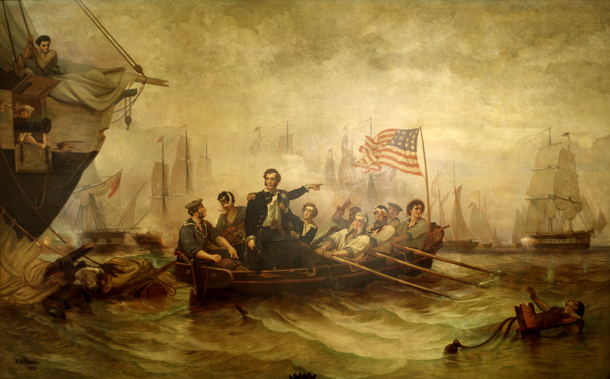
This experience enkindled in me a lifelong fascination for all things associated with the War of 1812 era. For instance, I marveled at the Federal style architecture, in fashion from about 1780-1820. The furniture and home accessories omnipresent in those days became familiar to me likewise.
Naturally, because of the coinciding eras, I took great satisfaction in studying the early U.S. Mint and its coinage, gobbling up many books on the subject (Stewart, Taxay, Bowers, Orosz & Augsburger). How I wished I could have toured that facility with Mint Directors David Rittenhouse or Robert Patterson as my guide. Sadly, the last of the original mint buildings was demolished in 1911.(1)
I grew a special affinity for coins that could have possibly circulated during the War of 1812 years (the final clash of that war – The Battle of New Orleans – was fought in January 1815). Upon holding an 1814 Classic Head large cent, it gave me pause, realizing a U.S. soldier may have carried it as a shiny new coin while doggedly defending Fort McHenry during the furious British naval bombardment of September 13-14, 1814.
At the same time, I pondered what my 1809 Classic Head half cent could have purchased during its heyday. Even with inflation factored in, doubtful it could have bought much (which partially explains why the denomination was discontinued after 1857).
Thus, I established a “type set” goal customized to my personal interests: Coins that witnessed firsthand the War of 1812. Whether it was a half cent or a $5 gold half eagle minted 1815 or earlier, it was fair game for my “oddball” collection.
I took things a step further. When my current home was built, I planned the office to be like a page out of history. The moldings, flooring, furniture, paint, light fixtures, and accessories all came together to produce a fairly good reproduction of a Federal style room.
The finishing touch was a coin box on top of the dresser, where “spare change” accumulated... half cents, large cents, dimes, quarters, and half dollars… all of which are qualified to testify about events from the War of 1812, but wistfully will forever remain silent.
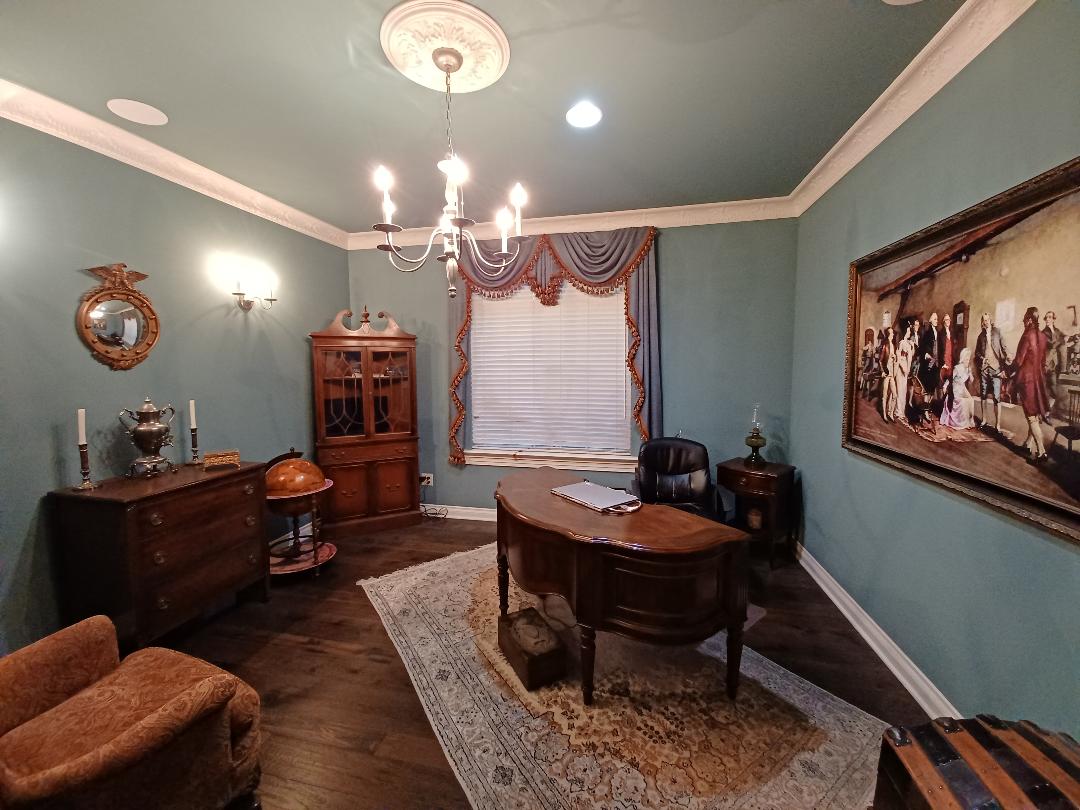
As you would expect, all the coins in the box are well worn, so no need to worry much about their grades (although my heart skipped a beat when a friend once dropped the 1815 Capped Bust quarter to the floor and the cat pounced on it). At the same time, I avoid horribly worn or damaged coins. All are in decent shape and easily recognizable.
(Of course, I would never break out certified coins from their protective encapsulation to toss into the spare change box!)
It is my dream to someday own a 1796 Draped Bust quarter. It’s one of my favorite coins and will fit nicely into this collection. But you can bet your bottom Flowing Hair dollar it won’t end up in the spare change box!
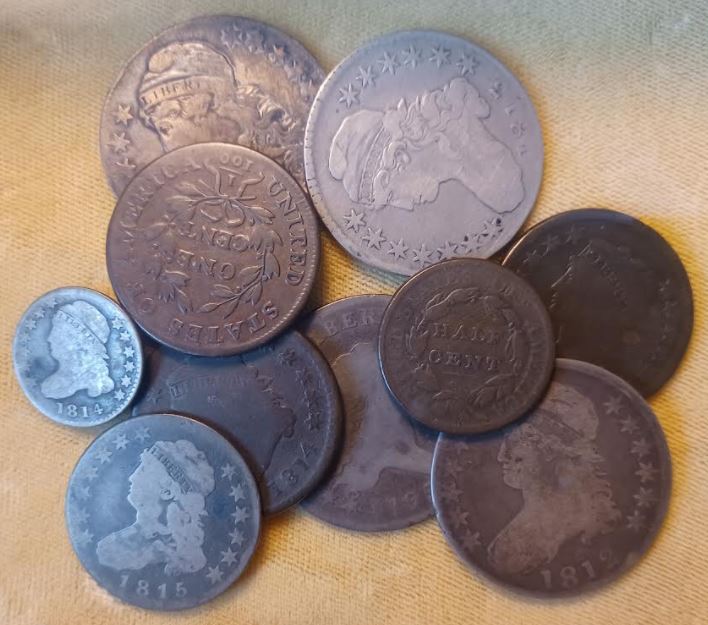
Quick Links to Other "Getting Started in Coin Collecting" Chapters...
The next chapter in this section is Understanding Quality.
Use the links directly below to navigate the "Getting Started in Coin Collecting" section.
- Coin Grading Basics
- Absorb Knowledge and Stay Current
- What to Collect? (the current chapter)
- Understanding Quality
- Develop a Passion for Coins
- Get to Know People
- Handling & Storing Numismatic Treasures
- Coin Lingo
- Best Places to Buy Coins
All the chapters referenced above are accessible from any other chapter in this section. Thus, no need to return to the "Getting Started in Coin Collecting" Introductory page to link to other chapters.
Sources
1. Orosz, Joel J. and Augsburger, Leonard D. The Secret History of the First U.S. Mint. Atlanta, GA: Whitman Publishing, 2011.

